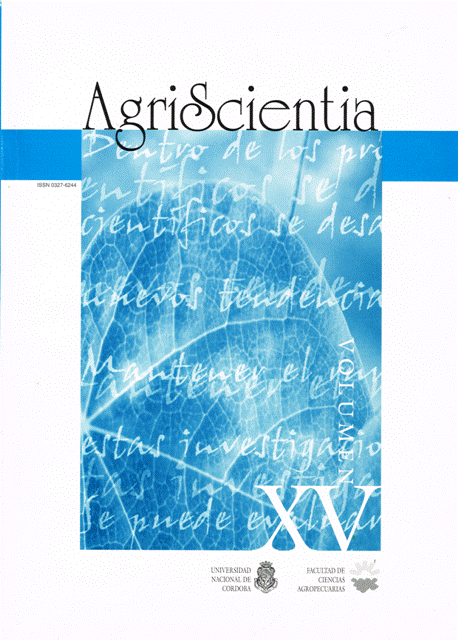Experiences in germination and vegetative reproduction applied to reforestation with Polylepis australis (Rosaceae) in the Sierras Grandes de Córdoba, Argentina
Main Article Content
Abstract
Propagation experiments with Polylepis australis BITT were conducted in a greenhouse and in the Córdoba mountains to facilitate forest recovery through reforestation. Germination percentage varied greatly among seeds collected from different individuals and was positively correlated with the cover of P. australis at the collection site. No differences in germination were observed among substrates (sand, leaf litter, or a soil-sand mix) or with substrate sterilization. However, treating seeds with damp cold was harmful. Vegetative propagation through cuttings proved feasible, with spring being the best season, and the use of root promoters was not advisable. The survival rate of transplanted seedlings and cuttings in their natural habitat was high, with seedlings showing greater growth compared to cuttings.
Article Details

This work is licensed under a Creative Commons Attribution-ShareAlike 4.0 International License.
How to Cite
References
Aizen, M.A., & Feinsinger, P. (1994). Forest fragmentation, pollination, and plant reproduction in a Chaco dry forest, Argentina. Ecology, 75, 330–351.
Amuchástegui, P.I. (1985). Ensayos de germinación de Polylepis australis BITT. (Tabaquillo): Estudio sobre la relación entre el porcentaje de germinación y el tamaño/peso de las semillas. [Tesis de Seminario inédita]. Universidad Nacional de Córdoba.
Cabido, M. (1985). Las comunidades vegetales de la Pampa de Achala, Sierras de Córdoba, Argentina. Documents Phytosociologiques, 9, 431–443.
Cabido, M., & Acosta, A. (1985). Estudio fitosociológico en bosques de Polylepis australis BITT. ("Tabaquillo") en las Sierras de Córdoba, Argentina. Documents Phytosociologiques. N.S., 9, 385–400.
Chebez, J.C. (1994). Los que se van: Especies argentinas en peligro. Editorial Albatros, 492–510.
Feinsinger, P., Tiebout, H.M., & Young, B.E. (1991). Do tropical bird-pollinated plants exhibit density-dependent interactions? Field experiments. Ecology, 72, 1953–1963.
Fjeldsá, J., & Kessler, M. (1996). Conserving the biological diversity of Polylepis woodlands of the highlands of Peru and Bolivia: A contribution to sustainable natural resource management in the Andes. NORDECO, Copenhagen, Denmark, 250 pp.
Kopta, R. (1985). Estudio sobre la germinación de Polylepis australis BITT., y algunas consideraciones preliminares sobre la diseminación y depredación de sus unidades dispersantes. [Tesis de Seminario inédita]. Universidad Nacional de Córdoba.
Kunin, W.E. (1992). Density and reproductive success in wild populations of Diplotaxis erucoides (Brassicaceae). Oecologia, 91, 129–133.
Luti, R., Solis, M., Galera, F., Ferreira, N., Berzal, M., Nores, M., Herrera, M., & Barrera, J. (1979). Vegetación. En J.B. Vázquez, R.A. Miatello, & M.E. Roqué (Eds.), Geografía Física de la Provincia de Córdoba (pp. 297–368). Ed. Bolett, Buenos Aires.
Siegel, S., & Castellan, N.J. (1988). Nonparametrical Statistics for the Behavioral Sciences (2ª edición). McGraw-Hill, Inc., New York, 111–124.
Sokal, R.R., & Rohlf, F.J. (1981). Biometry (2ª edición). Freeman, New York.
Afifi, A.A., & Clark, V. (1984). Computer-aided multivariate analysis. Lifetime Learning Publications, a division of Wadsworth, Inc., 458 pp.





